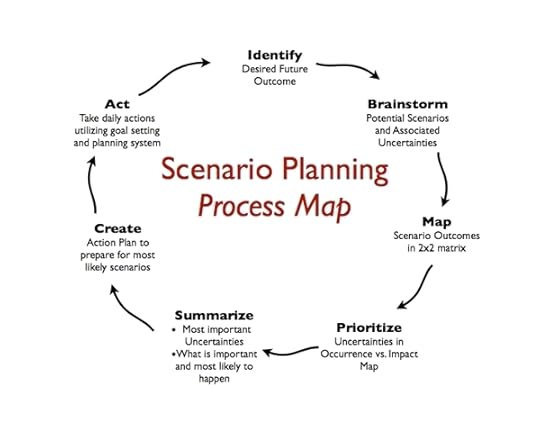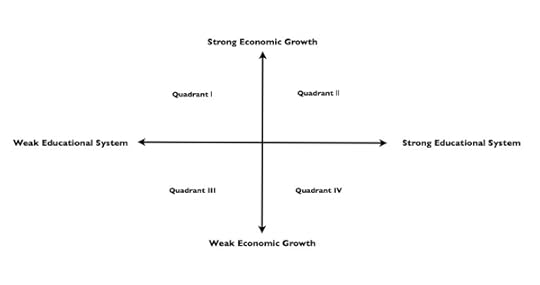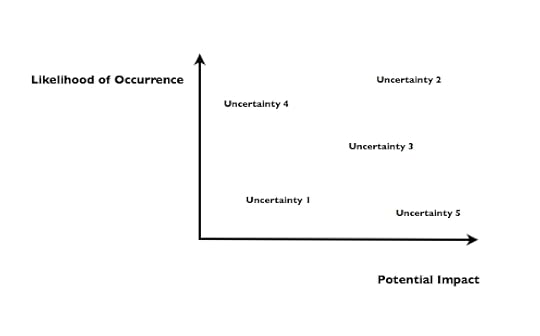Intelligent Risk Taking for the Risk Averse
Contrary to what you may believe—or have been taught to believe—failure is good. It teaches, builds character, instructs us how not to do something, and leads to understanding of how to do it correctly. Sometimes the only path to success is through failure. In fact, venture capitalists often prefer to staff their start-ups’ leadership teams with people who have a few failures under their belt, the theory being that they know the path of what doesn’t work, and now in a different set of conditions, they’ll find the path to success. Of course, the team is ideally comprised of people who failed a few times and then eventually succeeded. Failing perpetually isn’t the objective.
Failure, risk taking, and success all go hand in hand. If you’re afraid to take risks, statistically you’ll have low failure rates; at the same time, you may also have low success rates. As the old saying goes: “You gotta be in it to win it.”
But like many things in life, there are good and bad ways to take risk, and although at some point you’ll fail, the key will be how effectively you learn from it.
Fortunately, there are several tools and models we can use to help us take risks in a thoughtful way, as well as additional methods that allow us to understand the results of our risk-taking efforts so that we can learn more quickly and improve.
SCENARIO PLANNING
One excellent tool to map out your risk-taking efforts is called Scenario Planning. It originated at the RAND Corporation in the 1940s by Herman Kahn as the creation of plausible future realities. The essence of the technique is to look at the goal you want to achieve and clearly think through all possible outcomes that could occur, starting from your current baseline. In other words, you begin with “This is what I would ideally like to have happen,” and then proceed to “What are all the things that could go wrong?”
Art Kleiner describes the process in his book, Doing Scenarios, as follows:
“Scenario planning forces us to learn to see more clearly the possible worlds in which the unimaginable, the unthinkable, the ungodly, and the unpredictable actually come to pass. If we can feel our way around in them in our imaginations for a while, then we can prepare ourselves for whatever future does come to pass.”
Kleiner is referring to the downside risks, but it’s important to keep in mind that scenario planning can also lead to the uncovering of opportunities. For example, when you map out what could occur, certain outcomes may actually present possibilities for providing a business or service to counter prospective negative issues. In addition, Scenario planning works best when you have as much data as possible to feed into your estimation of future outcomes. Further, it allows you to bring uncertainties to the surface that may arise over time, challenging your assumptions of how you see the future unfolding. It likewise permits possible alternative scenarios to emerge.
With the accelerated pace of technological change and globalization, there’s almost no business, industry, or personal situation that isn’t undergoing rapid change. The challenge lies in the fact that although there are many game-changing variables to consider, you cannot afford to take too much time weighing them. The world won’t let you take a wait-and-see attitude.
Most companies do some level of scenario planning as part of their yearly planning and budgeting cycle; however, the emphasis is often on establishing the next year’s goals and objectives rather than mapping out potential long-term scenarios and building that information back into the near-term business goals. Although corporate risk management teams exist in large businesses—and many are quite proficient at what they do—their assessments don’t always translate to the operational level of the business as they should. One only needs to look at the financial meltdown of 2008, along with recent events in that sector, to see some weighty examples.
While nobody wishes to focus on it, similar long-term threats exist for us all on a personal level. These may include:
Changes in our health
Changes in our career (which could affect our finances or need to relocate)
Natural disasters (an unfortunate occurrence that’s increasing)
Unexpected expenses, etc.
Taking these into account, we can employ the same type of risk management through scenario planning that companies do and apply them on a personal level. In fact, many families do this already on an informal basis, through the sharing of stories between family members. Grandparents and parents will often share how difficult situations befell them throughout their lives, hoping their children will benefit from their experience and avoid the same mistakes. They’re essentially saying: Don’t think this can’t happen to you, because it can, and hopefully you can take the right steps now to avoid it.
If we therefore utilize scenario planning well, we can expect to reap the following benefits:
Challenging our assumptions about the future and uncovering both risks and opportunities
Discovering risks in a systematic way, and in the process, reduce our aversion to taking risks since we can be prepared for them in advance
Thinking outside the box to remove limitations at both the professional and personal level

In the Scenario Planning Process Map above, I have outlined the steps you would take to create your own scenario plan for any topic. Start at the top by first identifying the desired future outcome you seek, and then move clockwise to each successive step. As an example to see how this works, say you are considering relocating to a new area. You start by identifying what is the desired situation you seek in the future (not necessarily how it exists today). So, if you’re just starting out as a family, perhaps your major concerns are: (1) Will there be a strong public high school for my children to attend ten years from now? (2) Will the long-term economic trends be positive so that I can have a viable job and afford to send my kids to college?
With that in mind, you move to step 2 and brainstorm all potential scenarios how your desired outcome may or not come true. Think deep about all the uncertainties that could arise and for which you need to do further research to determine their likelihood. Next, the 3rd step would be a simple 2×2 grid, where on the horizontal axis you would place one factor—say low and high economic growth— while the vertical axis would have strong and weak education systems. Once you research those two elements for each location you are interested in moving to, you would then place each location in the appropriate quadrant.
So, from the matrix, if a strong education system and vibrant economic growth were the most important items for your relocation decision, you would want to identify a place to live that you could place in quadrant II, high and to the right.
In short, identifying the trends is important, and the matrix allows you to see what appears to be the most likely scenario based on today’s known information. Where it gets challenging is uncovering information that isn’t readily known. That’s where the strength of your research and forecasting skills comes into play.
In step, 4 we can take further step and map out the uncertainties we have identified and what are the associated probabilities of each of them occurring and their associated impacts.
You can use the Potential Impact Map (above) which is a diagramming tool to consider the Likelihood of Occurrence vs. Potential Impact and allows you to graphically identify what future uncertainties are the most important to pay attention to. From the picture that emerges here, in step 5 we can summarize what are the most important uncertainties to pay attention to and be prepared for.
Lastly, in step 6 we would create an action plan that takes into account the potential risks and upsides we have identified. We can assess the possible consequences for each key concern of the relocation by asking the following questions:
If certain (negative) events did come to pass, what steps could we take to alleviate the situation?
Could we live with the anticipated contingencies?
What steps could we take in the near- and mid-term to help reduce the likelihood of those adverse events occurring, or at least for us to have built up the proper reserves to handle the consequences adequately?
What signposts or milestones will we pay attention to that will indicate certain scenarios becoming more likely over time?
Are we considering all potential risks in our scenario planning? What could happen though we currently think it has a low probability of occurring?
We would then integrate our plan into our overall goal setting system. ( See my previous post on Goal Setting in a Continuously Changing World.)
Done properly, scenario planning allows us to:
Look into the future and envision possible scenarios
Consider the consequences of their occurrence
Examine our ability to handle them
Ponder what steps we could take in the near and medium term to reduce our risk
Scenario planning isn’t always an exact science, but the more data you can acquire, the more you’ll identify the scenario most likely to occur, and hopefully also become aware of potential ones to be prepared for should they arise. Though it may seem daunting, it’s less about predicting the future and more about pinpointing a number of different possible eventualities. Understanding the consequences (both positive and negative) of those potential outcomes is what scenario planning is all about.
There’s a lot more to know about intelligent risk taking, including how to review and learn from your inevitable failures. See chapter seven in my book, Think Smarter in a Digitally Enabled World, for more details.
Jay Kshatri
www.ThinkSmarterWorld.com
The post Intelligent Risk Taking for the Risk Averse appeared first on Think Smarter World.






